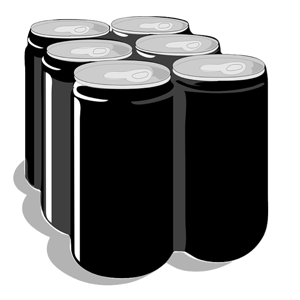Statistical survey focused on diffusion and knowledge of energy drinks, conducted in Palermo

Accepted: April 20, 2022
All claims expressed in this article are solely those of the authors and do not necessarily represent those of their affiliated organizations, or those of the publisher, the editors and the reviewers. Any product that may be evaluated in this article or claim that may be made by its manufacturer is not guaranteed or endorsed by the publisher.
In recent years energy drinks consumption has increased, due to their ability to improve physical and cognitive performance. Unfortunately, because of poor or incorrect information, people are not always aware of the harmful consequences of these drinks such as obesity, diabetes, hypertension, tachycardia until death. Therefore, we conducted a statistical survey in the Palermo area, submitting a paper questionnaire to 1003 people. Data analysis shows that only 29% of the audience never consumed energy drinks, while 71% tried them at least once in their life, especially in adolescence; 81% never or rarely drink them, 14% drink them a few times a month, while 5% drink them several times a week. Energy drinks are mostly consumed in disco, sport and study contexts; 93% of respondents are aware of the risks caused by the excessive consumption of them; 91% know that it is not appropriate to associate them with alcohol, but 9% think it is better to mix them; 72% of interviewees know that people should never drink energy drink with alcohol, 13% do it only in the weekend, while 15% think it is appropriate to do whenever they want. In fact, 14% do not believe it is risky to take energy drinks together with alcohol, and 40% do not know whether it is risky or not, while 46% know it can be risky; 45% associate the idea of cigarettes with alcohol and energy drinks. In conclusion, it is appropriate to highlight their risks to prevent some fatal consequences.
Bakker M, HeartyÁ, Leclercq C, et al. Use of the EFSA Comprehensive European Food Consumption Database in Exposure Assessment, EFSA Journal 2011;9:2097 DOI: https://doi.org/10.2903/j.efsa.2011.2097
Peacock A, Martin FH, Carr A. Energy drink ingredients. Contribution of caffeine and taurine to performance outcomes. Appetite 2013;64:1-4. DOI: https://doi.org/10.1016/j.appet.2012.12.021
Venturella F, Liga AV, Giammanco M, et al. Statistical analysis about diffusion of exercise addiction in Sicily. J Biol Res 2020;93:8239. DOI: https://doi.org/10.4081/jbr.2020.8239
Venturella F,Cancellieri G, Giammanco M, et al. Amateur doping: A survey on Sicilianpopulation. J Biol Res 2019;92:8238. DOI: https://doi.org/10.4081/jbr.2019.8238
McCusker RR, Goldberg BA, Cone EJ. Caffeine content of energy drinks, carbonated sodas and other beverages. J Anal Toxicol 2006;30:112-4. DOI: https://doi.org/10.1093/jat/30.2.112
Cioffi G, Bellino A, Pizza C, et al. Triterpene Saponins from Tupidanthus calyptratus. J Nat Prod 2001;64:750-3. DOI: https://doi.org/10.1021/np000375y
Mortillaro F, Giammanco M, Venturella F, et al. The role of polymorphisms of thiopurinemethyltransferase in therapy with Azathioprine: preliminary study. J Biol Res 2018;91:7717. DOI: https://doi.org/10.4081/jbr.2018.7717
Venturella F, Cancellieri G, Giammanco M, et al. Statistical analysis of a survey about diffusion of binge drinking and drunkorexia among students in Palermo. J Biol Res 2018;91:74-6. DOI: https://doi.org/10.4081/jbr.2018.7579
Venturella F, Cancellieri G, Giammanco M, et al. Methadone versus buprenorphine data detected from Caltanissetta SER.T. J Biol Res 2020;93:8239. DOI: https://doi.org/10.4081/jbr.2020.8345
Venturella F, Liga AV, Giammanco M. Gambling: Spreading among students in Palermo J Biol Res 2018;91:77-8. DOI: https://doi.org/10.4081/jbr.2018.7498
Curran CP, Marczinski CA. Taurine, caffeine, and energy drinks: Reviewing the risks to the adolescent brain. Birth Defects Res 2017;109:1640-8. DOI: https://doi.org/10.1002/bdr2.1177
Ministro della Gioventù Giorgia Meloni in collaborazione con Assobibe. Codice per l’etichettatura e la commercializzazione degli Energy Drinks. 2011.
PAGEPress has chosen to apply the Creative Commons Attribution NonCommercial 4.0 International License (CC BY-NC 4.0) to all manuscripts to be published.


 https://doi.org/10.4081/jbr.2022.9414
https://doi.org/10.4081/jbr.2022.9414



